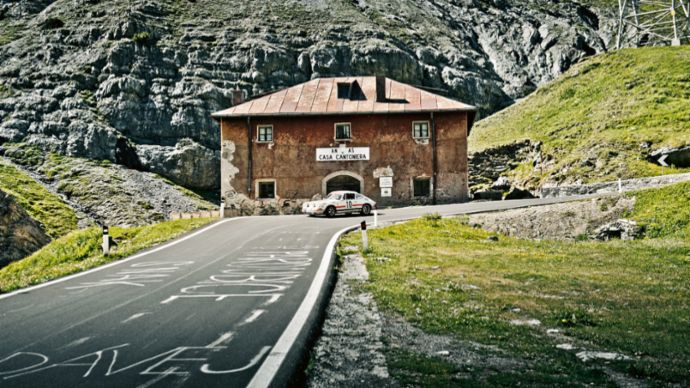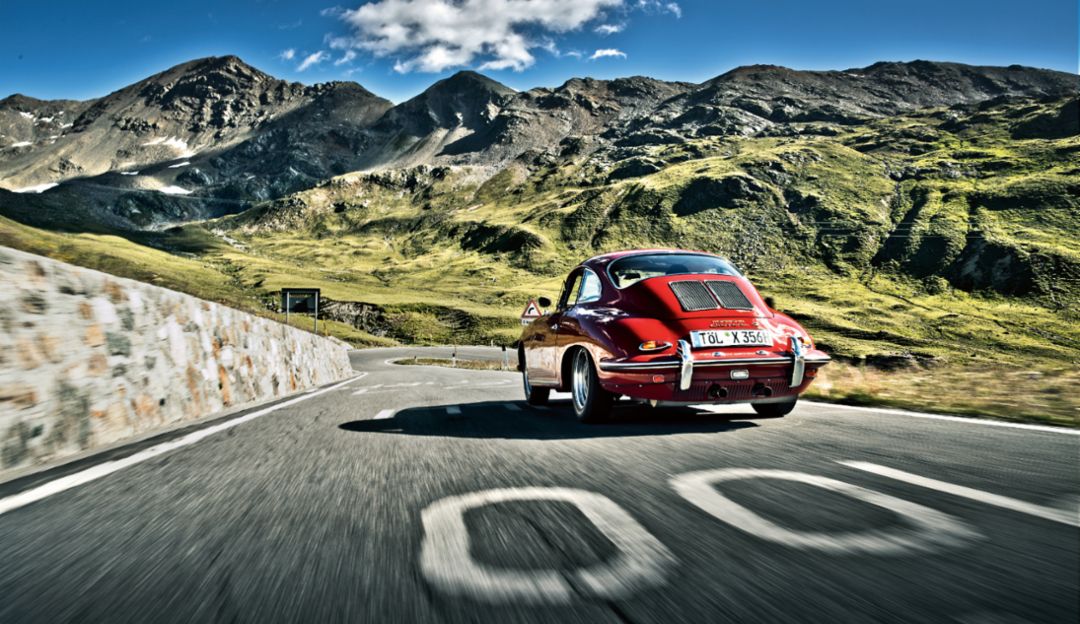Superlative Stelvio
The northeast ascent of the Stelvio Pass may well be Europe’s most spectacular ascent. Thousands of cornering cognoscenti and pilgrims of Alpine passes spend the summer in the serpentine tangle of its forty-eight hairpin turns, with the glacial Ortler Alps at their backs. An ordeal for some, a place of yearning for others. And an adventure for all.
1,532 meters
is the altitude gain—or loss, as the case may be—on the southwest side.
Carlo Donegani was a road engineer in the service of the Kingdom of Lombardy-Venetia, a crown land of the Austrian Empire during the Habsburg Monarchy. He designed the bank revetments for the Mallero River in the city of Sondrio and the Strada del Lario on the eastern shore of Lake Como. His road over the Splügen Pass links Splügen in the Swiss canton of Grisons with Chiavenna in the Italian province of Sondrio. But what makes Carlo Donegani so illustrious is his magnificent achievement in the Alps.
82 hairpin turns
or venerable switchbacks punctuate the ascent.

The formidable Stelvio:
Ever since Fausto Coppi conquered the Stelvio Pass in spectacular fashion in the 1953 Giro d’Italia, the mountain has ranked as the ultimate test for any racing cyclist—here, Porsche Chief Designer Michael Mauer accepts the challenge.2,757 meters
make the Stelvio the second-highest pass in Western Europe.
Just seven more meters and the Passo dello Stelvio—as it’s known in Italian—would be loftier than France’s Col de l’Iseran, the Alps’ highest paved pass. But even in second place, Italy’s highest Alpine pass, the “queen of Alpine passes” and “highest fairground in Europe,” has a stellar reputation: the British magazine Top Gear declared the Stelvio Pass the “greatest driving road in the world.”

Those who have braved the twenty-six kilometers and forty-eight turns carved in stone as well as the northeast ascent’s breathtaking altitude gain of almost 1,900 meters from Prad in Venosta Valley to the pass at 2,757 meters either bid farewell to the experience or come back time and again.
1825
saw the opening of the modern mountain pass.
Those dizzying switchbacks cleaving to the slopes can be frightfully addictive. Whether one encounters the Stelvio at the wheel of a sports car, leans into the curves astride a motorcycle, or attempts the agonizing ascent on a racing bike with mega-sized pinions, conquering this “holy mountain” of sporting endeavors is an unforgettable experience.
1848
was the year the Stelvio Pass became the border pass between Austria and Italy.

Historic turns:
The course of the road over the Stelvio Pass has barely changed in almost two hundred years.
49 km
is the length of the Stelvio Pass road between Spondigna near Prad in Venosta Valley and Bormio in Valtellina.

48 switchbacks
punctuate the northeast ascent.
As a landmark of Alpine architecture, the Stelvio Pass at the crossing between South Tyrol and Lombardy is no less impressive than the Golden Gate Bridge or the Empire State Building. Moreover, the mercurial history of the pass is every bit as fascinating as its thrilling course: opened by engineer Carlo Donegani in 1825, the Stelvio Pass was strategically important from the outset and was frequently the setting of tragedy. Between 1915 and 1917, the World War I mountain front ran from the Stelvio Pass over the Ortler massif and Mount Adamello to Lake Garda. Other clashes were peaceful in nature: in the 1930s, racing legends such as Hans Stuck, Rudolf Caracciola, and Tazio Nuvolari took to the serpentine switchbacks of the road.
1,842 meters of altitude
lie between Prad in Venosta Valley and the pass.

Alpine climber:
Porsche’s light and agile sports cars are tailor-made for mountain roads such as this.1954
German race-car drivers Helmut Polensky and Herbert Linge crossed the Stelvio Pass in the Porsche 356 SL Gmünd Coupe—and took victory in the Liège-Rome-Liège Rally shortly thereafter.
And in 1953, when the Giro d’Italia first included the Stelvio Pass, the Italian cyclist Fausto Coppi—Il Campionissimo, or “champion of champions,” and three-time world cycling champion—put it on the sports world’s map with an unforgettable solo ride. Coppi crossed the pass with a 4:27-minute lead over Hugo Koblet. The Swiss took a tumble twice, had a defect, and finally reached the finish line in Bormio in a state of utter exhaustion. But even Coppi had a confession to make after his initial encounter with the behemoth: “I thought I was going to die.”

